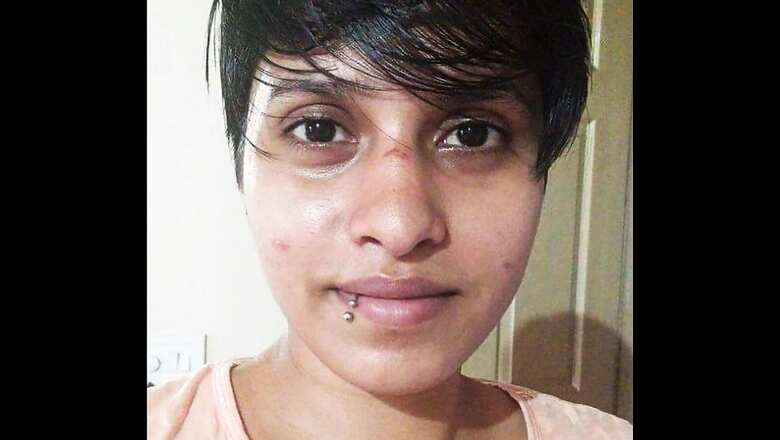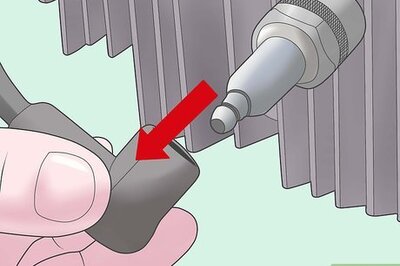
views
Bharathi (name changed), a 38-year-old teacher, continues to live with her abusive husband for the sake of her children. The beatings started right after her wedding in 2005 when her husband, who works as a jeweller’s assistant, took to heavy drinking.
He also abuses her in foul language in front of their children. “I am scared that if I divorce him, he will get the custody of my children. Their lives will be destroyed,” she says.
There have been interventions by the family, police and NGOs but the physical and verbal abuse continue. Bharathi is just waiting for her children to grow up.
Twenty-three-year-old Nishath (name changed) got married in 2020. She stays with her father now after her husband, an AC technician, started abusing her physically and mentally for more dowry. He not only beat her, but also isolated her from her family.
Even after her mother’s death, her in-laws continued with their demand for more dowry. She was denied food after being forced to perform back-breaking domestic work. They also alleged that Nishath did not bleed on her wedding night and questioned her virginity. This led to more beatings from her husband.
The husband is ready to divorce her only if her family pays him Rs 5 lakh. Police, too, refused to lodge a complaint, says Nishath. She now lives her life in a limbo, caught between threats of violence and seeing her father’s health deteriorate every day.
“Why didn’t she just leave him?” The question has been asked more times than the number of pieces Shraddha Walkar’s live-in partner allegedly chopped her body into. Much as onlookers wish it to be, the answer is not a simple one.
As the world marks November 25 as the International Day for the Elimination of Violence Against Women, it would do the Indian society well to take a look at the insidious patterns of violence that women are subjected to on a daily basis.
Intimate Partner Violence (IPV) is one of the forms in which this violence manifests. According to the latest National Family Health Survey Data, around one-third (32%) of the women aged 18 to 49 in India have experienced physical or sexual violence.
Among married women aged 18-49 who have experienced physical violence since age 15, 83% report their current husband as the perpetrator of the violence, and 9% report their former husband to be the assaulter.
Explaining the term Intimate Partner Violence, Dr Sahir Jamati, consultant psychologist and psychotherapist at Masina Hospital in Mumbai, says: “The American Psychiatric Association defines intimate partner violence as physical, psychological or sexual abuse of one person by another in a close relationship. Apart from the physical violence and its effect on physical health, IPV victims are also at greater risk for certain aspects associated with their mental health.”
Dr Himanshu Nirvan, a psychiatrist at Noida International Institute of Medical Sciences (NIIMS), said: “Any form of aggression from a partner that results in abuse or violence comes under intimate partner violence. It can be physical, sexual, stalking, or psychological/mental aggression as well. Even if an ex-partner or stranger follows you, it can result in complicated scenarios going ahead.”
“For years and years, domestic violence has been normalized. It may start with abuse or a slap and gradually grows into a toxic relationship wherein the victim suffers every day silently to keep the relationship intact and satisfy the norms of a relatively conservative society. According to Observer Research Foundation, approximately 736 million women suffer from intimate partner violence, or non-partner sexual violence, at least once in their life. Violence is nothing but ignited aggression that reaches its highest self one day,” adds Dr Nirvan.
The Scars, Seen and Unseen
IPV can leave deep scars not only on the victim’s body, but on their psyche too. It can affect their decision-making capacity, which explains why victims find it difficult to leave such relationships.
Elaborating on the psychological impact of IPV, Dr Sahir says: “Associations between IPV and poor physical and mental health have been demonstrated in global literature. A review study by Gina Dillon and others reported that depression was the most commonly researched aspect of mental health related to IPV. O’Campo estimated that women with a history of IPV were 2.3 times more likely to develop PTSD as compared to women who did not face violence. IPV and symptoms of PTSD also prevent the victim from indulging in new relationships.”
Studies also report that a greater severity of anxiety symptoms are present in abused women when the abuse is more frequent and more severe. Apart from the clinical picture, IPV also affects an individual’s capacity to function in their day-to-day life, it affects their well-being, self-esteem, self-confidence.
“In my opinion, experiencing IPV does affect an individual’s decision-making capacity. The major factor of IPV is control. The perpetrator would demand control from the victim in various aspects of their life and therefore, going against that control and even mentioning preferences or decisions would be incongruent as they usually do not go against their established control,” she added.
Why Leaving is Not That Easy
In her book, Why Does He Do That?: Inside the Minds of Angry and Controlling Men, author Lundy Bancroft writes: “One of the obstacles to recognizing chronic mistreatment in relationships is that most abusive men simply don’t seem like abusers. They have many good qualities, including times of kindness, warmth, and humor, especially in the early period of a relationship. An abuser’s friends may think the world of him. He may have a successful work life and have no problems with drugs or alcohol. He may simply not fit anyone’s image of a cruel or intimidating person. So when a woman feels her relationship spinning out of control, it is unlikely to occur to her that her partner is an abuser.”
Once the dark cloud passes, the abuser can behave like a lost soul, someone who is ashamed of his actions and needs healing. The woman might think the worst is over. But most of the times, the beast does return.
“Experiencing trauma might cause guilt, self-blame and/or confusion where the victim might be thinking that she deserved it, or she might be the one who triggered him,” says Dr Sahir.
Sometimes, women want to be the saviour and bring a change in their abuser, thus falling into an endless loop of abuse.
“Women in India sometimes fear repercussions and lack support from family members in certain situations. Generally, people from some sociocultural backgrounds are more concerned about social norms and family integrity. From a young age, women are sometimes taught about rituals, traditions and mannerisms to maintain a happy family life,” says Dr Himanshu.
“The preconceived image of an ideal Indian woman sometimes becomes a standard, and women may feel pressurised to fit into that image. Hence, as they grow, women try to stick to the boundaries to maintain stability and don’t tend to raise their voices. In an attempt to break these boundaries, she may have to go through mental, and physical harassment by her loved ones. Thus majority of them put up with violence so that things stay calm and they don’t have to face backlash,” he adds.
Jameela Nishat, who founded Shaheen Women’s Resource and Welfare Association in Hyderabad, says that even after the victim gathers courage to approach the police, the authorities prefer to go for reconciliation rather than lodging a complaint.
“In 99% of domestic violence cases, we seek legal help rather than police. In case the woman wants a divorce, we proceed legally. If she does not, we counsel her husband and other perpetrators of the violence. We make them sign on stamp papers that they would not abuse the victim anymore.”
Read all the Latest India News here




















Comments
0 comment